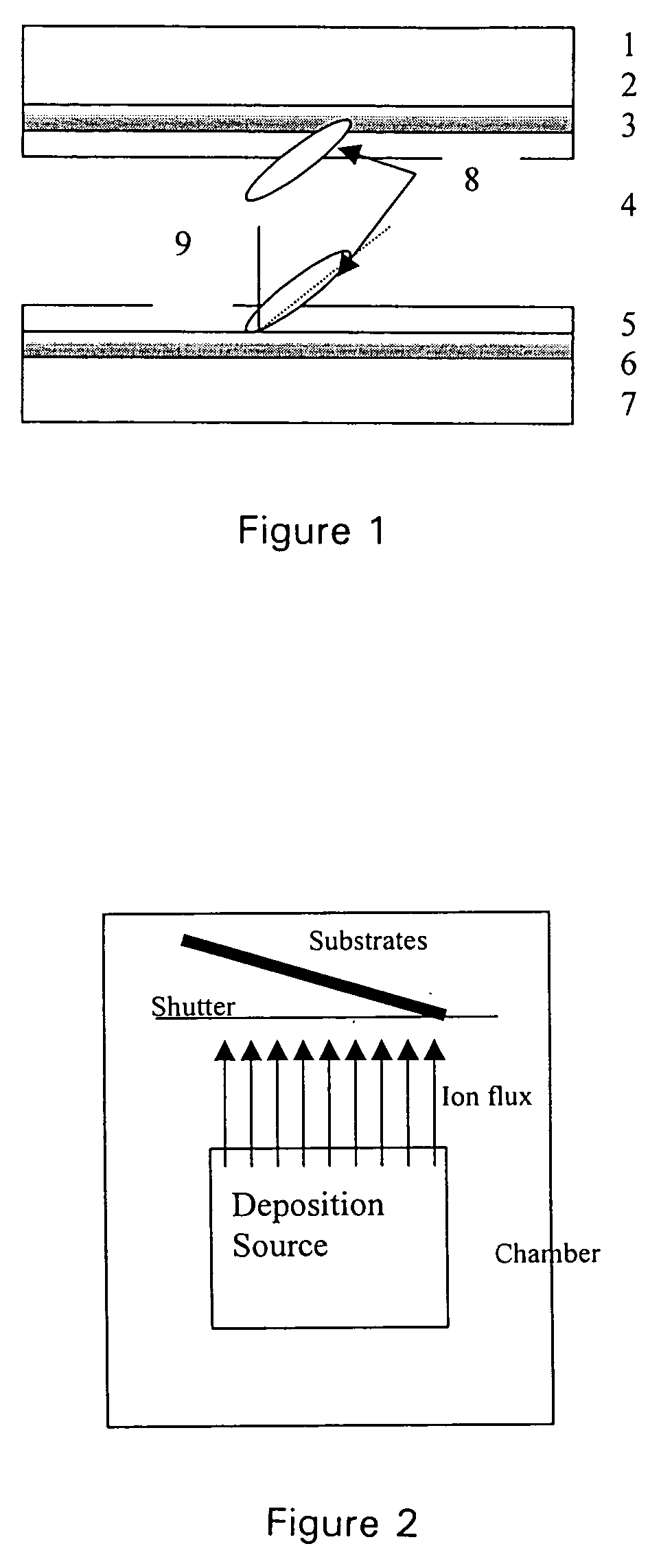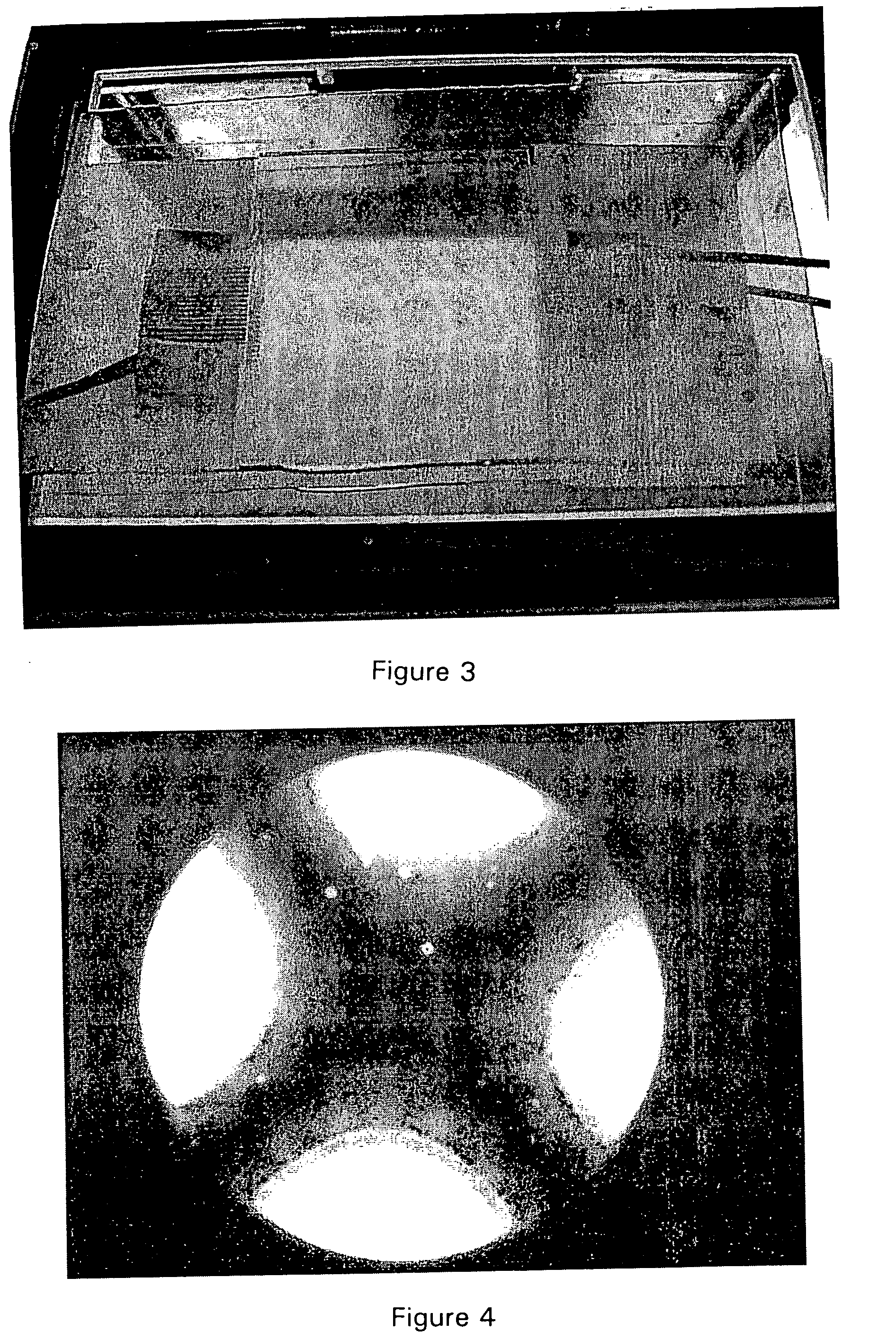Liquid crystal display
- Summary
- Abstract
- Description
- Claims
- Application Information
AI Technical Summary
Benefits of technology
Problems solved by technology
Method used
Image
Examples
Embodiment Construction
[0022] The basic cell structure of a tilted homeotropic liquid crystal display according to the invention is illustrated in FIG. 1. It can be a transmissive, reflective or transflective liquid crystal display with substrates (1, 7), conductive electrodes (2,6) and alignment layers (3,5). It is filled with liquid crystal (4) with negative dielectric anisotropy. A molecule of liquid crystal (8) is aligned with respect to the normal of the substrate to define an oblique tilted angle (9).
[0023] Substrates (1,7) of the homeotropic liquid crystal display have a thickness substantially within a range of 0.1 to 5 mm, and more preferably 0.2 to 3 mm. The thickness can be different, depending on what materials used. The substrate can be a multi-layer structure for design purpose, for example, CMOS silicon wafer with Al metal as mirror surface.
[0024] Conductive electrodes (2,6) are provided, having a thickness with range from 10 A to 5000 A and more preferably 100 A to 2000 A. The thickness ...
PUM
 Login to View More
Login to View More Abstract
Description
Claims
Application Information
 Login to View More
Login to View More - R&D
- Intellectual Property
- Life Sciences
- Materials
- Tech Scout
- Unparalleled Data Quality
- Higher Quality Content
- 60% Fewer Hallucinations
Browse by: Latest US Patents, China's latest patents, Technical Efficacy Thesaurus, Application Domain, Technology Topic, Popular Technical Reports.
© 2025 PatSnap. All rights reserved.Legal|Privacy policy|Modern Slavery Act Transparency Statement|Sitemap|About US| Contact US: help@patsnap.com



